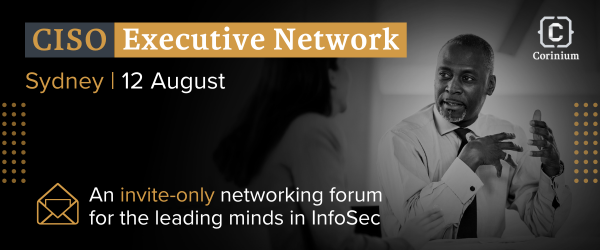Keolis Downer CISO: What Lies Ahead in Cyber Security

Keolis Downer’s first CISO Daniel Aldam engaged with Corinium APAC Conference Director Maddie Abe about the recent shifts and emerging threats in the cybersecurity landscape.
Cybersecurity stands as a crucial safeguard against changing threats. One of those changes, according to Keolis Downer’s inaugural CISO Daniel Aldam, is the shift away from traditional OS vulnerabilities to those in enterprise applications.
“State-sponsored Advanced Persistent Threats (APTs) are becoming more brazen, challenging the notion that certain regions, including Australia, are immune,” Aldam says. “Integrating AI into the cybersecurity equation introduces new and not fully understood risks.”
“One of the threats I consider particularly concerning now is malware from unusual vectors. We’re all used to email being the primary method of malware ingress. However we’ve seen Teams used recently, and vendors don’t seem to have good tools to deal with that.”
“It’s the ‘invisible’ methods that are truly worrisome – for example users receiving malware on BYOD enabled devices, via (e.g.) WhatsApp.”
“I’m expecting OT networks to be actively targeted in the future – ransomware could achieve significant financial rewards in these areas.”
The Risk in the Race for AI
Aldam also highlighted concerns about the public perception of AI, and the significant pressure businesses are under to use the technology, with no understanding of the risks.
“Generative AI will have an immediate impact on phishing and other BEC style attacks, however the practical risk change is unknown at this stage,” he says.
“There’s a cat-and-mouse game with attackers using LLM to generate fraudulent content, and defender companies (mail filters etc.) using LLM to catch LLM-created content.”
Regarding the latest progress in quantum computing, Aldam mentions that combined with AI, there is the potential for greater technical advancement in remarkably short timeframes than in all of previous human history prior to this.
“If that happens, nobody will understand the implications – it’s going to be a tough time. Of course, quantum computing isn’t practical yet, but it’s only one breakthrough from being commercially viable – we may only have a year or three to wait,” he says.
Aldam also suggests that the ability to generate highly convincing simulations of individuals, even in video format and in real-time, will pose significant challenges in the near future.
“As prices lower to achieve this technical outcome, it’s likely to become a standard target attack method. With the advent of all previous technology to bring us all together virtually, the irony is we may force ourselves only to trust people in person,” he says.
To combat new modes and routes of attack, Aldam highlights the importance of evidence-based approaches and using risk as a deciding factor. These strategies provide a solid foundation for adapting to the constantly changing threat landscape and ensuring the effectiveness of cybersecurity measures.
“Collaboration with external entities should be done on a case-by-case basis, At the very least, you need a trusted advisory organisation. Collaborative efforts enhance discussions on cybersecurity posture and best practices, contributing to a more robust cybersecurity stance,” he says.
Daniel Aldam will be speaking at CISO Executive Network, an invitation-only and high-level intimate cyber security gathering under strict Chatham House Rule. To learn more and apply for a pass, visit this link.




